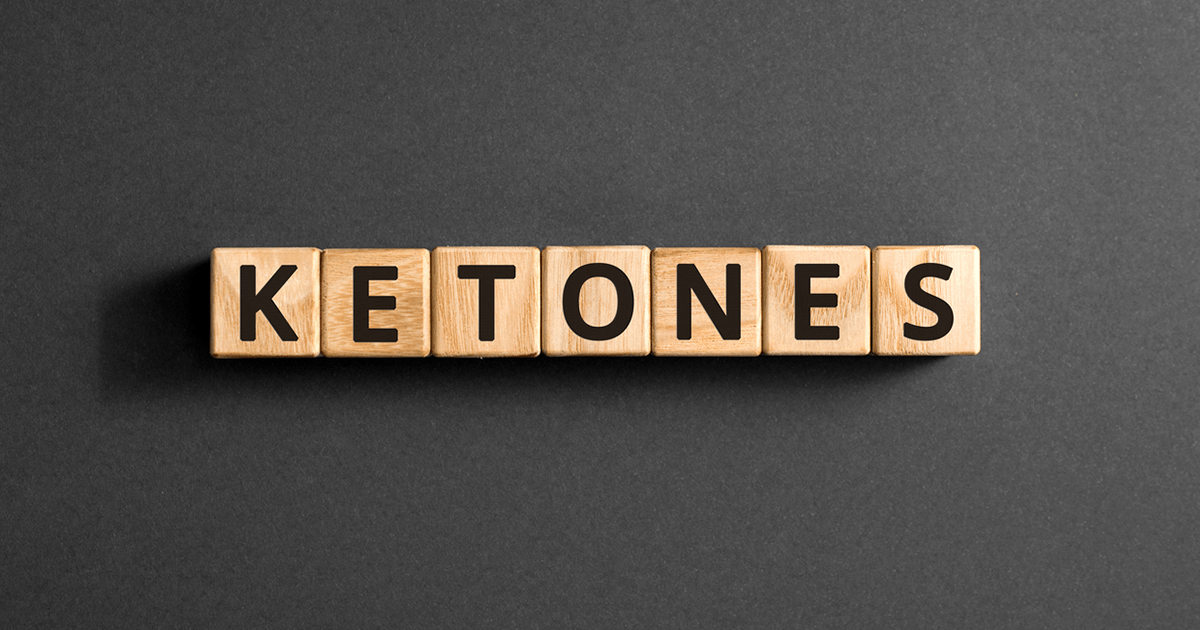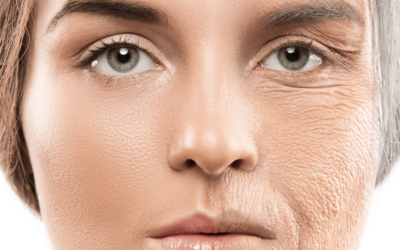ATP
So let’s get dive straight and deep into that. I have to warn you though. It is gonna be more scientific but…!? Our bodies adapt to processing different types of nutrients into energy. Proteins, fats, and carbs can be converted into fuel using many different metabolic processes. When you eat high-carbohydrate foods or excessive amounts of protein, your body will break it down into a simple sugar called glucose. This happens because glucose provides the cells with the quickest source of ATP (Adenosine TriPhosphate), which is the primary energy molecule needed to fuel almost everything that goes on in the body. More ATP, more energy. More calories, more ATP. Every calorie you consume from carbohydrates, fats, and proteins can be used to increase your ATP in some way.
Energy savings
Our bodies use much of these nutrients to maintain themselves on a daily basis. If you eat more than enough food there will be an excess of glucose that your body doesn’t need. What does your body do with the extra sugar? They are constantly preparing themselves for a future famine. So, rather than excreting excess calories, they store them for later. The body saves up for the future in two ways:
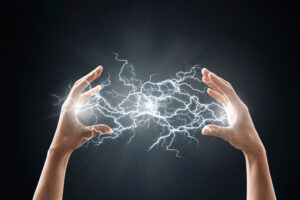
-
Glycogenesis
During this process, excess glucose is converted to glycogen (the body’s stored form of sugar) and stored in the liver and muscles.
-
Lipogenesis
If there’s already enough glycogen in muscles and liver, any extra glucose will be converted into fats and stored via a process called lipogenesis. Our glycogen stores are limited but our fat stores are basically unlimited. They provide us energy to survive for weeks or months without real food.
Restriction
When food carbohydrates or calories are restricted, glycogenesis and lipogenesis are no longer active. Instead, glycogenolysis and lipolysis take their place, freeing energy from glycogen and fat stores. Fat is used as fuel but an alternative fuel source called ketones is produced as well. Ketosis happens. When your body has no food, like when you are sleeping, fasting, or following the Ketogenic diet, the body will convert some of its stored fat to highly efficient energy molecules called ketones. These ketones are synthesized after the body breakdowns fat into fatty acids and glycerol, but why does this happen? Why not stick with using fat for fuel?
New fuel
The fatty acids and glycerol can be directly turned into fuel in many cells throughout the body, they are not used as energy by brain cells. This is because they are converted into energy too slowly to fuel the brain. This is why sugar tends to be the primary source of fuel for the brain. This also helps us understand why we produce ketones. Without having an alternative energy source, our brain would be extremely vulnerable when we don’t consume enough calories. Our muscles would be broken down very much and converted into glucose to feed our sugar-hungry brains until we didn’t have enough strength to find food. The human race would be extinct without ketones. How do ketones actually work? How and when do they appear? Almost everything that we know about ketosis is from studies on people who are fasting not from people who are in dietary ketosis. But first things first.
Two ways of fueling
When you restrict carbohydrates, our liver uses two processes to fuel your cells:
Ketogenesis
takes fatty acids from stored fat and dietary fat and converts them into ketones. The ketones are then released into the blood to fuel our brain, muscle cells, etc. The process by which the body burns ketones for fuel is called ketosis. This does not mean that every cell in the body can survive on ketones. Some cells always need to use sugar for energy. To provide glucose for those cells our liver uses a process called gluconeogenesis.
Gluconeogenesis
is like a magic that the liver uses to convert non-sugar matter (glycerol from fatty acids, amino acids from protein, and lactate from muscles) into sugar.
Stages of fasting
Let me show you approximate stages and processes that we go thru when we fasting:
Stage 1: The glycogen depletion phase up to 28h
This phase is about glycogen. Hormone levels are shifting, causing increases in gluconeogenesis and fat burning. Ketone production is still not active yet.
Stage 2: The gluconeogenic phase 2 to 10 days of fasting
During this phase, gluconeogenesis takes over to provide the body with energy. Ketones are starting to be produced, but at lower levels. You may notice that you have keto breath and are urinating more often because of increased acetone levels in your blood. The window of time for this phase is so wide (2-10 days). It depends from person to person. For example, healthy males and obese individuals tend to stay in the gluconeogenic phase for longer than healthy women.
Stage 3: The ketogenic phase after 2 days of fasting or more (hand in hand with stage 2)
This phase is characterized by a decrease in protein breakdown for energy and an increase in fat and ketone use. This is the ketosis time. Each person will enter this stage at a different time and a different level depending on genetic and lifestyle factors, activity level, and how many times they fasted/restricted carbs before.
Fuel for the brain
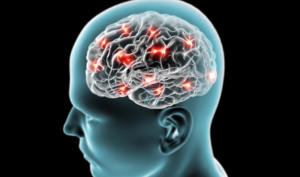
Earlier we found out that the body breaks down fat into fatty acids and glycerol, which can be used for fuel in the cells directly but not by the brain. To meet the needs of your brain, the fatty acids and the glycerol enter the liver where glycerol convert to glucose, thru the gluconeogenesis process, and fatty acids into ketones thru the ketogenesis process. As a result of ketogenesis, a ketone body called acetoacetate is produced and then is converted into two types of ketone bodies:
-
Beta-hydroxybutyrate (BHB)
After keto-adaptation (a couple of weeks), the body will begin to convert the acetoacetate into BHB because it’s a much more efficient source of fuel (it undergoes an additional chemical reaction that provides more energy for the cell than acetoacetate). Studies show that the body and brain prefer using BHB and acetoacetate for energy because the cells can use it 70% more efficiently than glucose.
-
Acetone
Can sometimes be metabolized into glucose, but is mostly excreted as waste. This gives the distinct smelly breath that most ketogenic dieters know.
Efficiency
Over time, your body will use, expel, or produce acetone more efficiently, and if you use keto sticks to track your levels of ketosis, you may think it is slowing down. That’s not TRUE!!! The brain is burning the BHB as fuel, and the body is trying to give the brain as much efficient energy as possible. That’s why long-time low carbohydrate consumers will not show deep levels of ketosis on their urine tests. In fact, long-time keto dieters will use up to 50% of their body energy requirements and 70% of their brain’s energy needs from ketones, so don’t let the urine tests fool you. The more accurate method is to track ketosis thru a blood test. Home blood tests are not so accurate but good enough.
GKI
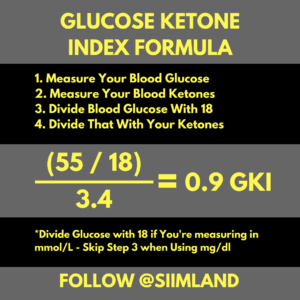
Always do KETONE/GLUCOSE tests though. U will see where you are more accurately thru GKI (glucose-ketone-index) calculation. The ketosis that you experience on the ketogenic diet is much safer and healthier than the ketosis you get into as a result of fasting. While you are fasting, your body has no food sources, so it starts converting the protein in your muscles to glucose. When you do fasting intermittently (short one up to cca 24h 2-3x a week), and prolonged one (up to 3-4 days) just once a month max, then your muscle loss is really not significant and we just benefiting from that.
More fasting
Yes, you lose weight in starvation, which means more than 4 days of fasting. Your body will still convert the fat from your fat cells into energy to survive but this is not healthy. Do you want to look like people from nazi camps in WW2? Nobody wants (I think). The question is how you re-feed after and between fastings but that is a topic for another day. The ketogenic diet, on the other hand, provides us with the safest and healthiest way to experience the benefits of ketosis, which means, restricting carbohydrates while ingesting proper calorie amount from fat and protein allows the ketogenic process to preserve muscles by using ketosis and ketone bodies we create for fuel.
Benefits
Muscle mass preservation isn’t the only unique benefit that the ketogenic diet and ketosis provide our bodies. Many research studies have found that ketones have a plethora of beneficial effects throughout the body as well.
A few benefits of KETONES
-
Mitochondrial production stimulation
New mitochondria are formed in cells that burn ketones for fuel. This occurs especially in the brain cells of ketogenic dieters. Extra mitochondria help improve the energy production and health of our cells.
-
Protection and regeneration of the nervous system
Ketones help preserve the function of aging nerve cells and aid in the regeneration of damaged and malfunctioning nervous system cells. For example, many studies have shown that ketones help brain healing after injuries improve significantly.
-
Ketones act like an antioxidant
Ketones are a more efficient fuel source than sugar. One of the reasons is the case that ketones produce less reactive oxygen species (ROS) and free radicals (basically the same meanings as ROS) than sugar when they are used. By burning ketones for fuel, the body is able to protect itself from the damage and disease that reactive oxygen species and free radicals can cause.
-
Prevention of growth of some cancers
Research shows that ketones can help fight some types of cancer. This is because most cancer cells cannot use ketones as fuel. Without fuel, the cancer cells have no energy for growth, and the immune system can finally destroy them.
-
Improving brain function tremendously
There are many research studies on how burning ketones for fuel can help people with autism, epilepsy, Alzheimer’s disease, and Parkinson’s disease. In many cases, the ketogenic diet and ketones are more effective than conventional treatments.
Promising research results about KETONE can mostly be explained by two factors:
-
Brain cells function more efficiently when they use ketones for fuel rather than sugar
-
Ketones can have an inhibitory effect on nerve cells
What happens when you make a hyper-excitable nervous system more efficient and less active? Less autism-like behavior, fewer seizures events, better brain function, etc. This list of benefits is not even close to being complete. Scientists are just beginning to understand the effects that ketones have on the body, so I will be waiting and looking for new discoveries regarding ketones, ketosis, and the ketogenic diet. Now, you may be thinking that ketosis sounds great, but is there any downside? Other than the mild dehydration that may occur in the first few days of carbohydrate restriction called KETO flu there are no downsides to using the ketogenic diet to get into ketosis. The only time ketosis can be dangerous is when insulin is either unavailable or not functioning properly.
Ketoacidosis

is a potentially lethal state that occurs when a huge amount of ketones accumulate in the blood. Some GPs may advise against the ketogenic diet because they are afraid you may get into ketoacidosis. This fear is pointless in my opinion. The process of ketosis is closely regulated by the liver, and the body rarely produces more ketones than it needs for fuel. This is why the ketogenic diet is so safe and effective. Ketoacidosis, on the other hand, will most likely occur in type 1 and type 2 diabetics that don’t have their blood sugar levels under control. Type 2 diabetes can be reversed, though, and there will be no danger from ketoacidosis anymore!!! Be aware!!! A high KETONE level in the blood is not a problem! The problem is when u have a high level of KETONE AND GLUCOSE AT THE SAME TIME!!! The combination of insulin deficiency and high blood sugar levels that are commonly found in people with diabetes create a vicious cycle that causes ketones to build up excessively in the blood. By restricting carbs healthy individuals and people with diabetes can keep their blood sugar levels under control and experience the benefits of using ketones for fuel. If you have a high level of both (ketone and glucose) u need to take exogenous Insulin and go slow with KETO and fasting. From a long term of KETO and fasting with diabetes type 1 u can decrease the amount and number of Insulin shots tremendously but it takes a longer time to get there. In this case, u have to be pretty careful what u do and u have to know how to do it!!! The best is to work with your health practitioner who is KETO friendly.
All together

Ketogenesis and gluconeogenesis create the ketones and sugar that satisfy all of the body’s energy needs when food isn’t available or when carbohydrates are restricted. Although ketones are most well-known for being an alternative fuel source, they provide us with many unique benefits as well. The most effective and safest way to get all of the benefits of ketosis is by following the ketogenic diet. By doing so, you won’t run the risk of losing precious muscle mass or entering the potentially lethal state of ketoacidosis. The ketogenic diet is a bit more nuanced than many people think. It’s not only about restricting carbohydrates, ensuring adequate protein, fat, and calorie consumption are essential to your success as well. So here we are! The end of my KETONE post but not the end of that knowledge on the KETONE topic. Science brings us new evidence every day. I will keep you posted as much as I can but until then.
Cheers!

